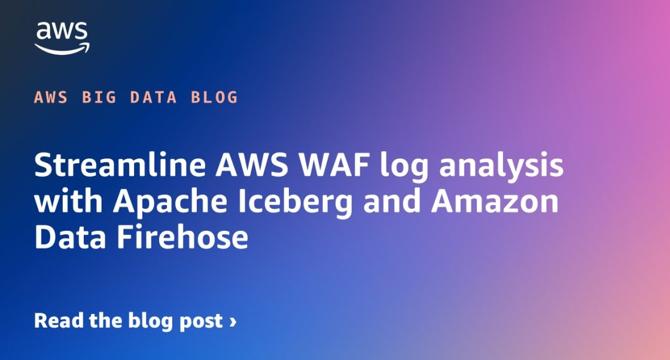Amazon
1M
316

Image Credit: Amazon
Streamline AWS WAF log analysis with Apache Iceberg and Amazon Data Firehose
- AWS WAF logs are crucial for monitoring security and enhancing application defense in various industries such as banking, retail, and healthcare.
- Organizations are leveraging data lake architectures and Apache Iceberg for efficient processing of security data stored in Amazon S3.
- Apache Iceberg offers features like seamless integration with AWS services, time travel, and schema evolution for robust security analytics solutions.
- Amazon Data Firehose simplifies streaming AWS WAF logs to Apache Iceberg tables, reducing operational complexity and ensuring reliable data delivery.
- By combining Firehose with Iceberg, organizations can analyze AWS WAF logs effectively, focusing on security insights rather than infrastructure management.
- The solution involves configuring AWS WAF logging, creating Apache Iceberg tables, setting up Firehose streams, and linking WAF logs to Firehose.
- Table optimization using compaction and storage management is recommended to enhance query performance in Apache Iceberg tables.
- To clean up and avoid future charges, users should empty the S3 bucket, delete the CloudFormation stack, Firehose stream, and disable AWS WAF logging.
- The solution provides a structured approach to analyze AWS WAF logs at scale, with guidance on optimizing Iceberg tables for efficient querying.
- The authors of the post include Charishma Makineni, a Senior Technical Account Manager at AWS, and Phaneendra Vuliyaragoli, a Product Management Lead for Amazon Data Firehose at AWS.
Read Full Article
19 Likes
For uninterrupted reading, download the app